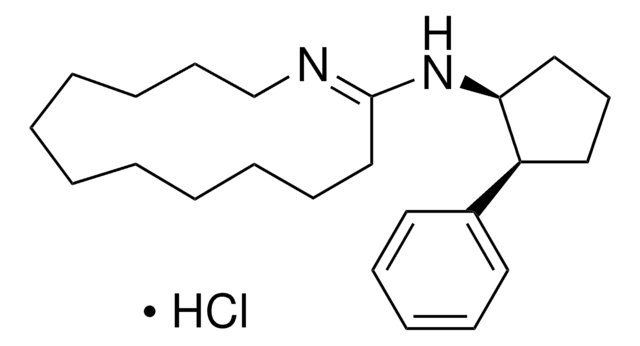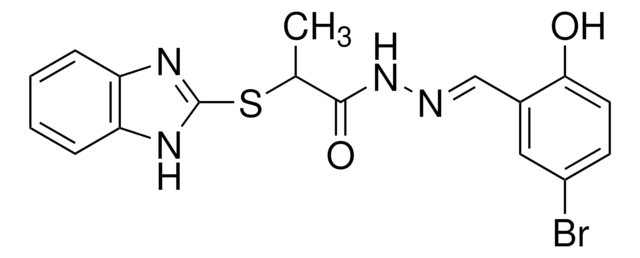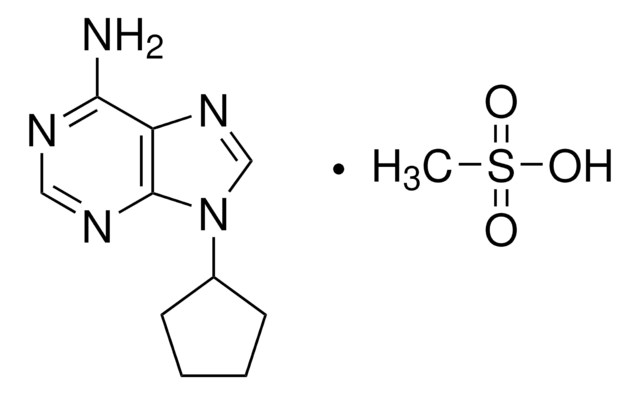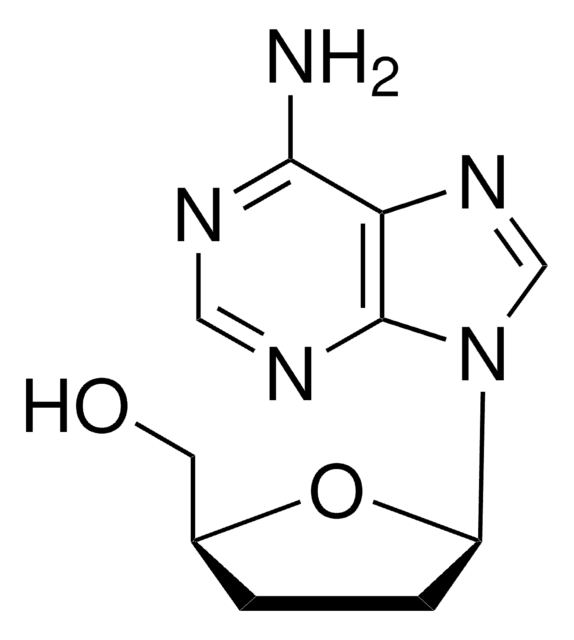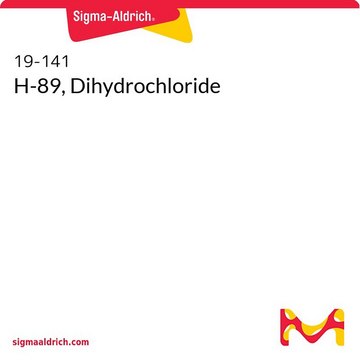D7408
2′,5′-Dideoxyadenosine
≥95% (HPLC), solid
Sinônimo(s):
2ʹ,5ʹ-dd-Ado, NSC 95943
About This Item
Produtos recomendados
Ensaio
≥95% (HPLC)
forma
solid
cor
white
solubilidade
DMSO: soluble
temperatura de armazenamento
−20°C
cadeia de caracteres SMILES
C[C@H]1O[C@H](C[C@@H]1O)n2cnc3c(N)ncnc23
InChI
1S/C10H13N5O2/c1-5-6(16)2-7(17-5)15-4-14-8-9(11)12-3-13-10(8)15/h3-7,16H,2H2,1H3,(H2,11,12,13)/t5-,6+,7-/m1/s1
chave InChI
FFHPXOJTVQDVMO-DSYKOEDSSA-N
Informações sobre genes
rat ... Adcy2(81636)
Aplicação
Ações bioquímicas/fisiológicas
Características e benefícios
Reconstituição
Código de classe de armazenamento
11 - Combustible Solids
Classe de risco de água (WGK)
WGK 3
Ponto de fulgor (°F)
Not applicable
Ponto de fulgor (°C)
Not applicable
Equipamento de proteção individual
Eyeshields, Gloves, type N95 (US)
Certificados de análise (COA)
Busque Certificados de análise (COA) digitando o Número do Lote do produto. Os números de lote e remessa podem ser encontrados no rótulo de um produto após a palavra “Lot” ou “Batch”.
Já possui este produto?
Encontre a documentação dos produtos que você adquiriu recentemente na biblioteca de documentos.
Os clientes também visualizaram
Conteúdo relacionado
Cyclic nucleotides, including cyclic AMP (cAMP), cyclic GMP (cGMP) and cyclic ADP-ribose, have been extensively studied as second messengers of intracellular events initiated by activation of GPCRs. cAMP modifies cell function in all eukaryotic cells, principally through the activation of cAMP-dependent protein kinase (PKA), but also through cAMP-gated ion channels and guanine nucleotide exchange factors directly activated by cAMP.
Nossa equipe de cientistas tem experiência em todas as áreas de pesquisa, incluindo Life Sciences, ciência de materiais, síntese química, cromatografia, química analítica e muitas outras.
Entre em contato com a assistência técnica
